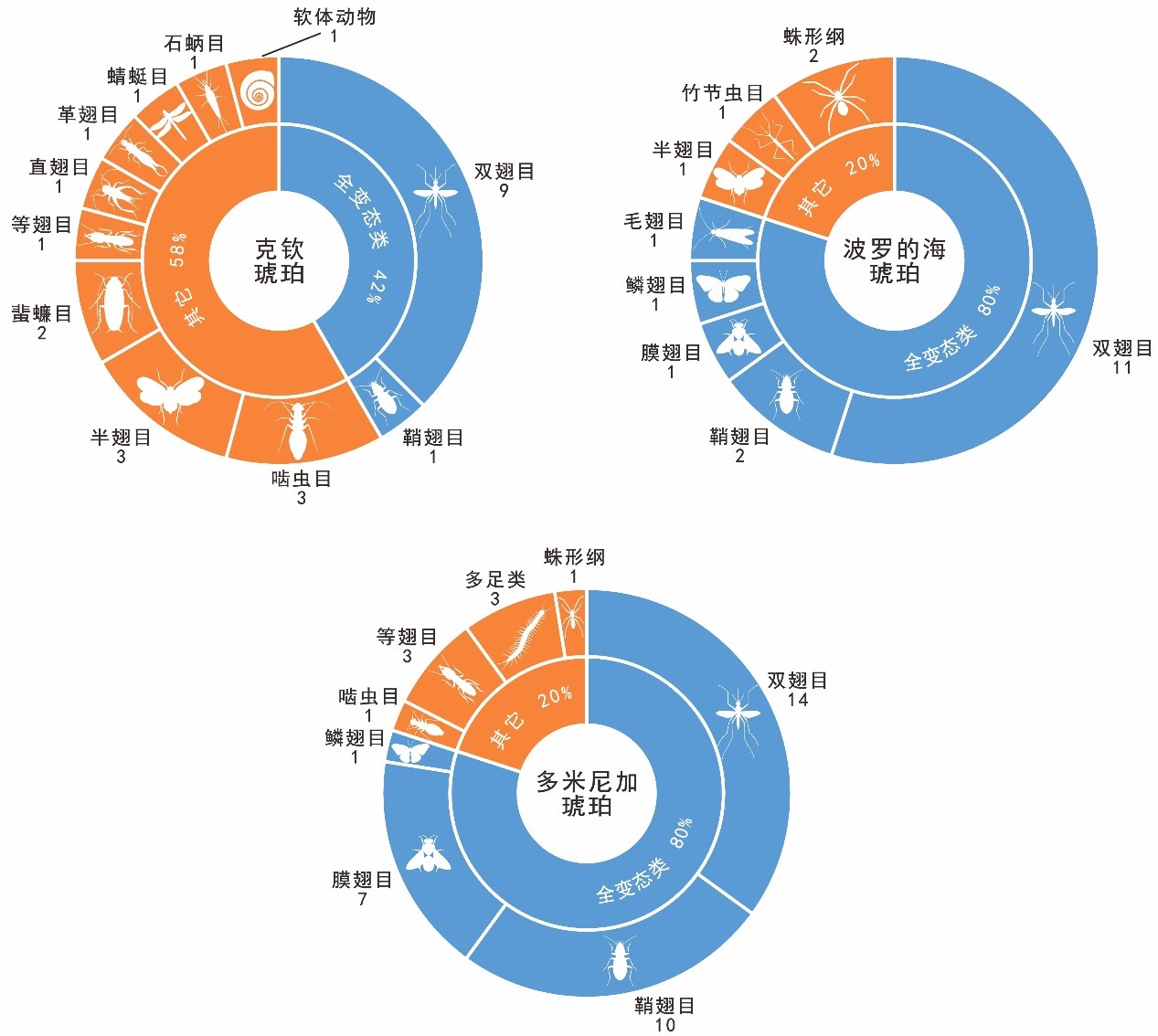Nematodes (roundworms) are distributed worldwide in almost all habitats, however, nematodes are exceedingly rare in the fossil record, since most of them are small, with soft bodies and concealed habits. The Mermithidae represent a family of nematodes that are large compared with other nematodes, and they tend to exit their hosts even before maturation if their hosts are stressed. Thus, mermithid nematodes are most likely of all nematodes to occur as recognizable fossils.
Recently, the Nanjing Institute of Geology and Palaeontology of the Chinese Academy of Sciences (NIGPAS), collaborated with other scientists from USA and UK, discovered 16 new mermithids associated with their insect hosts from mid-Cretaceous Kachin amber (about 100 million years ago). This study reveals what appears to be a vanished history of nematodes that parasitized Cretaceous insects, and has been published on eLife on July 14, 2023.
Nematodes play key roles in ecosystems by linking soil food webs and facilitating nutrient element cycling. Mermithid nematodes are obligate invertebrate parasites which occur in insects, millipedes, crustaceans, spiders, molluscs and earthworms. They can affect the morphology, physiology, and even the behaviour of their hosts. Hosts usually die when the mermithids exit, which is why mermithids have been considered as biological control agents, especially against mosquito larvae that transmit malaria.
Mermithid nematodes, these fossils mainly discovered from Eocene Baltic amber (11 species) and Miocene Dominican amber (9 species), but only four pre-Cenozoic species have previously been recorded. Therefore, little is known about their early evolution of parasitism. LUO Cihang, a PhD canditate student, supervised by Prof. WANG Bo from NIGPAS, carried out a systematic study on the 16 new mermithids of the Kachin amber.
In this study, sixteen new mermithids associated with their insect hosts were described, including 9 new species, which triples the diversity of Cretaceous Mermithidae (from 4 to 13 species). Meanwhile, according to new records of this study, nine insect orders are now known to have been infested by mermithid nematodes in Kachin amber and this number is even higher than that of Baltic amber and Dominican amber (six and three insect orders, respectively). This result suggests that mermithid parasitism of insects was actually widespread during the mid-Cretaceous, and probably already played an important role in regulating the population of insects in Cretaceous terrestrial ecosystems.
At the same time, it was found that 12 of these 16 mermithids of the Kachin amber include previously unknown hosts. There are no previous extant or extinct records of nematodes attacking bristletails (Archaeognatha), but one is now discovered in this study. No barklice (Psocodea) are parasitized by mermithids today, but three different barklouse were found parasitizing by mermithids. Two members of the extinct planthopper family Perforissidae were also parasitized by mermithids, thus providing the oldest record of mermithid parasitism of planthoppers. Furthermore, this study provides the first fossil records of mermithids parasitizing dragonflies (Odonata), earwigs (Dermaptera), crickets (Orthoptera) and cockroaches (Blattodea), four host associations predicted from extant records but without fossil evidences. These fossils indicate that mermithid parasitism of invertebrates was already widespread and played an important role in the mid-Cretaceous terrestrial ecosystem.
In addition, among the insect hosts of mermithids preserved in Kachin amber, only one of the nine orders (Diptera) is holometabolous (i.e., insects with “complete” metamorphosis), whilst it is four out of six (Hymenoptera, Trichoptera, Lepidoptera and Diptera) in Baltic amber and all three insect host orders (Hymenoptera, Coleoptera and Diptera) are holometabolous in Dominican amber. The situation is similar when referring to the amount of nematode parasitism after compiling nematode–host records in these three best-studied amber biotas. In Kachin amber, only about 40% of the hosts are holometabolous, while this percentage increases to 80% in Baltic and Dominican amber. Holometabola are the most important hosts of extant mermithids as well as all invertebrate-parasitizing nematodes and this hexapod subgroup dominated the insect fauna during the Cretaceous. This study indicates that nematodes had not completely exploited Holometabola as hosts in the mid-Cretaceous, and non-holometabolous insects (i.e., insects without “complete” metamorphosis) were more available as hosts in the mid-Cretaceous. The widespread association between nematodes and Holometabola might have formed later.
Furthermore, our study shows that in contrast to their Cenozoic counterparts, Cretaceous nematodes including mermithids are more abundant in non-holometabolous insects. This result suggests that nematodes had not completely exploited the dominant Holometabola as their hosts until the Cenozoic.
The high diversity of mermithid nematodes during the mid-Cretaceous as shown in this study provides a glimpse into the structure of ancient parasitic nematode–host associations and their evolution over the past 100 million years,” says LUO, “these discoveries bring new opportunities to study the evolution of parasitism through the medium of amber and provide the direct evidence to reconstruct Cretaceous terrestrial ecosystem.”
A related Insight article written by Kenneth De Baets et al. has also been published, and they commented that this paper provided a good example to study the coevolution of nematodes and their invertebrate and helped scientists to better estimate the extinction risk of modern species.
This research was supported by the National Natural Science Foundation of China, Chinese Academy of Sciences, and Ministry of Science and Technology of China.
Reference: Luo Cihang, Poinar G.O., Xu Chunpeng, Zhuo De, Jarzembowski E.A., Wang Bo, 2023. Widespread mermithid nematode parasitism of Cretaceous insects. eLife 12, e86283. https://doi.org/10.7554/eLife.86283.
The information of related Insight article: De Baets K., Vanadzina K., Schiffbauer J., 2023. Trapped in time. eLife 12, e90008. https://doi.org/10.7554/eLife.90008.

Fig.1 Mermithids and their insect hosts from mid-Cretaceous Kachin amber (~99 Ma; million years ago) (Part I).

Fig.2 Mermithids and their insect hosts from mid-Cretaceous Kachin amber (~99 Ma; million years ago) (Part II).

Fig.3 The fossil record of Mermithidae plotted on the phylogenetic tree of insects.

Fig.4 The occurrence frequency of invertebrate–nematode associations from mid-Cretaceous Kachin amber, Eocene Baltic amber and Miocene Dominican amber.
Contact:
LIU Yun, Propagandist
Email: yunliu@nigpas.ac.cn
Nanjing Institute of Geology and Palaeontology, Chinese Academy of Sciences
Nanjing, Jiangsu 210008, China
Download:
